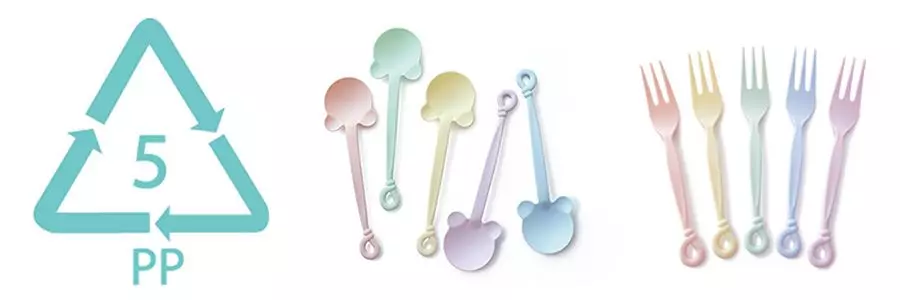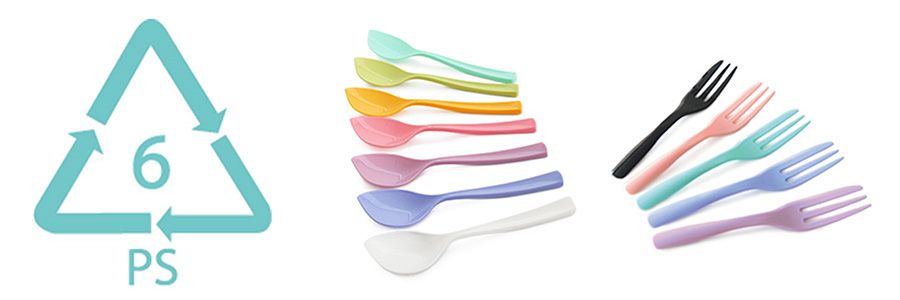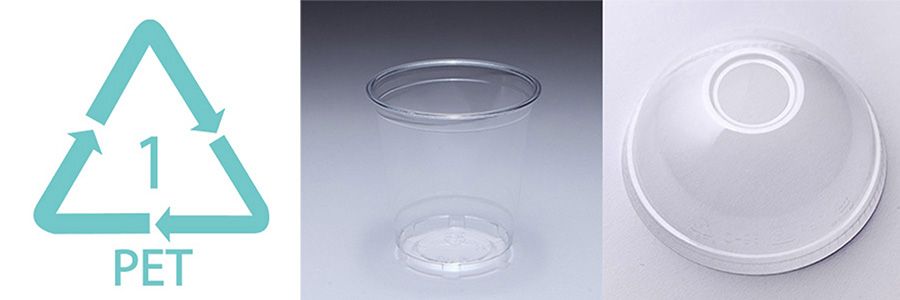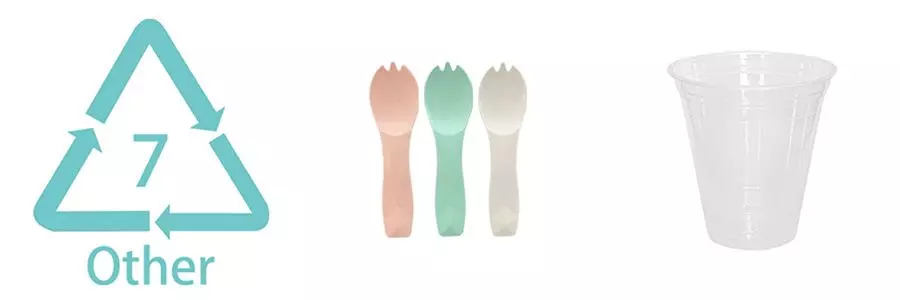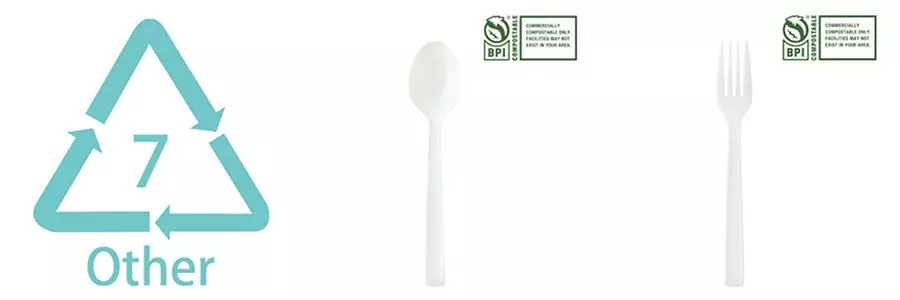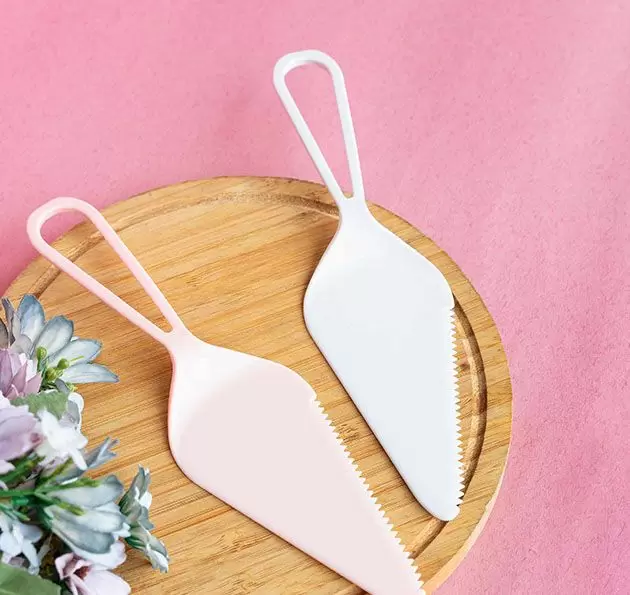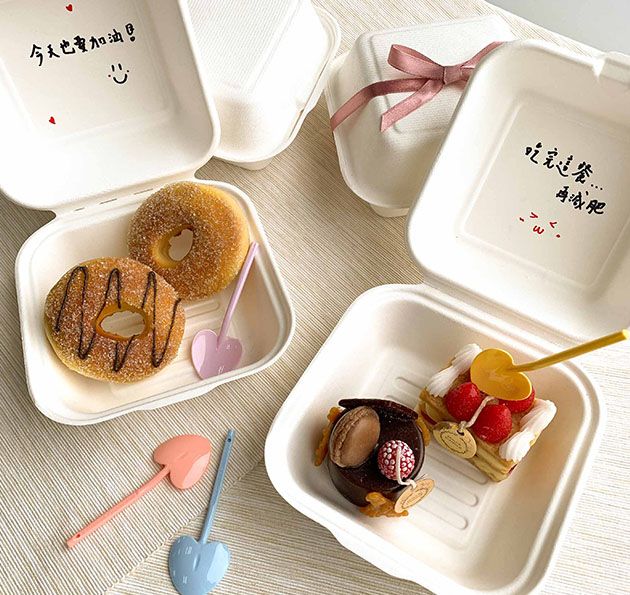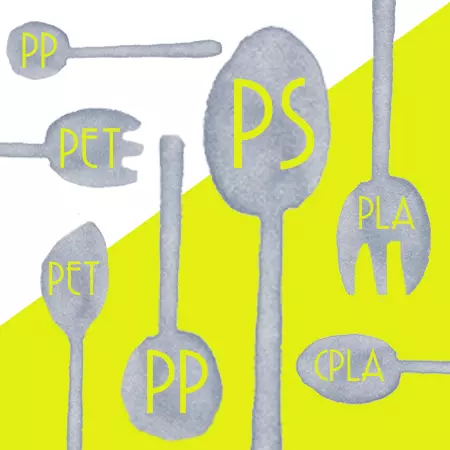
Features of Plastic Utensil
The Introduction to Plastic Product Material
Different kinds of plastic cutlery need to be using the different plastic material to make. Tair Chu provides many kinds plastic materials of disposable utensil, PP material cutlery, like a hot soup spoon, PS material dessert cutlery, like cake forks, even the eco-friendly material, like PLA cutlery and CPLA heat-resisting cutlery.
Let's to know the plastic material for plastic goods!
# 5 Polypropylene (PP)
■ Hot Food ■ Cold Food ■ Oil ■ Alcoholic
PP material can make many kinds of cutlery, such as the heat-resisting spoon, disposable hot food fork, or translucent ones of food container lid. The PP material with natures of heat-resisting up to 100°C ~ 120°C, acid and alkali resistant, chemical substances resistant, crash-proof, high temperature resistance. It's the most suitable materials for plastic tableware.
# 6 Polystyrene (PS)
□ Hot Food ■ Cold Food □ Oil □ Alcoholic
Non-foaming PS is majorly used for construction materials, toys, stationery, etc.; also commonly used as materials for containers for fermented dairy products (lactic acid products such as Yakult, Yogurt). It has been largely used to produce wash-free tableware in recent years, such as wash-free cup, salad box, egg container. Foaming PS is also called styrofoam, which was manufactured by adding foaming agent during its process to achieve the expansionn of volume by twenty to one-hundred times, and can be used for packing material or container. PS material is with nature of heat-resisting within 60°C; it is neither suitable for filling in with boiling water and fried foodstuff, nor for beverages with alcohol or citrus fruit. Available Products:Disposable snack tableware.
# 1 Polyethylene Terephthalate (PET)
□ Hot Food ■ Cold Food □ Oil ■ Alcoholic
With natures of heat-resisting within 60°C, as well as acid and alkali resistant; it may release Di 2-EthylHexyl Phthalate (DEHP), which is a kind of carcinogen, when overheating and long-term usage. Available Products:PET bottle.
# 7 PolyLactide (PLA)
□ Hot Food ■ Cold Food ■ Oil ■ Alcoholic
The major source of raw materials for PLA is from plants, instead of petroleum hydrocarbons. Discarded PLA products can be decomposed into carbon dioxide and water by microorganisms existing in soil, and then further became starch through photosynthesis. It is a kind of renewable and eco-friendly plastic products without effects of public hazard. Available Products:Disposable wash-free tableware.
# 7 The Crystallization of PLA(CPLA)
■ Hot Food ■ Cold Food ■ Oil ■ Alcoholic
Having same characteristics as PLA, the only difference is that CPLA is a kind of heat-resisting materials. Available Products:Disposable wash-free tableware.
# 7 Melamine Formaldehyde Resin (MF)
□ Hot Food ■ Cold Food □ Oil ■ Alcoholic
Melamine plastic tableware has advantages of crash-proof and low cost, it is mostly favored by eating house and usually used for kids’ tableware. Melamine resin can endure heat up to 110°C ~ 130°C and without deformation, however, a slim amount of trimeric cyanamide (melamine) will be released when the temperature is over 40°C or acid materials like vinegar is added; more amount of melamine will be released in line with higher temperature, it is hazardous to human body and may increase the risk of suffering from renal calculus and ureteral calculus when long-term exposure. It is recommended to wash by sponge instead of scouring pad, to prevent bacteria from breeding as scratches caused during washing. Available Products: Commonly used by snack stand, restaurant, or kids’ tableware.
# 7 Polycarbonate (PC)
□ Hot Food ■ Cold Food ■ Oil ■ Alcoholic
Even though the PC can endure heat up to about 130°C, it will release bisphenol A (BPA), is a kind of chemical substance which will disorder endocrine. So it is recommended not to hold hot mean. Available Products: Various kinds of colorful transparent plastic bottles used when sporting or mountaineering.
Reference:
Wikipedia-Polyethylene terephthalate(PET)
Wikipedia-The Crystallization of PLA(CPLA)
Wikipedia- Melamine Formaldehyde Resin(MF)
Contact us:
Tel:+886-4-23350398
Address:No.80-18-1, Qingguang Rd., Wuri Dist., Taichung City 41462, Taiwan
Features of Plastic Utensil - The Introduction to Plastic Product Material | Custom Plastic Cutlery Design & Plastic Tableware Manufacturing | Tair Chu
Located inTaiwan since 1978, Tair Chu Enterprise Co, Ltd. has been a disposable plastic cutlery and plastic tableware manufacturer. Their main compostable plastic with cutlery and tablewares, include Features of Plastic Utensil, plastic cutlery, plastic spoon, plastic fork, plastic knife, plastic spork, ice cream spoon, cake fork and party cutlery, which have 3000 selections with eco-friendly certifications.
Tair Chu with more than 40 year experience in the plastic injection and food package industry accumulate solid experience in building customized products including plastic cutlery, food containers, drinking cups and lids. Tair Chu provides not only OEM tableware service but also our unique design tableware to our customers to give them edge over their competitors.
Tair Chu has been providing customers high-quality plastic flatware, cutlery and tableware products, both with advanced technology and 45 years of experience, Tair Chu ensures each customer's demands are met.

